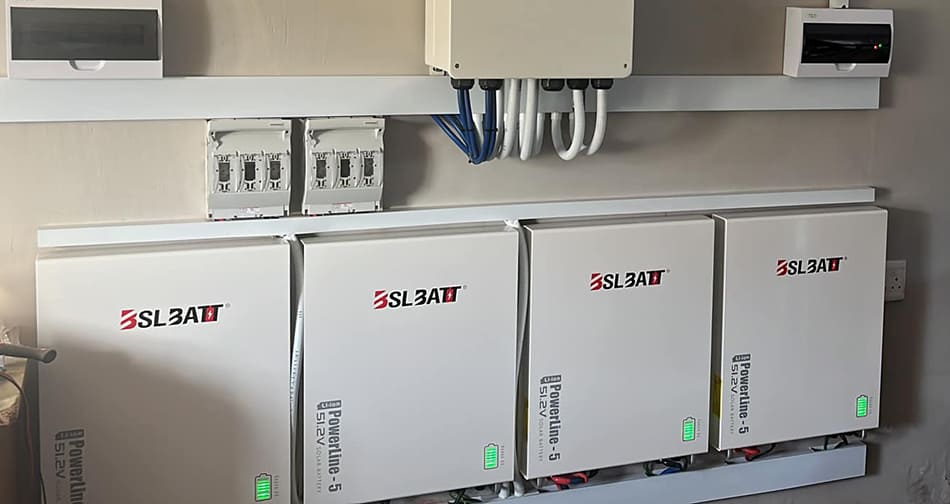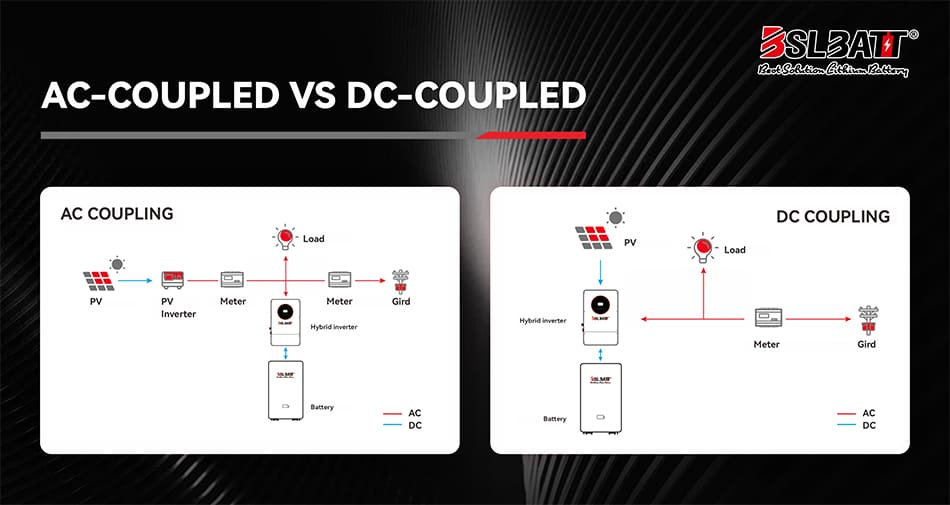Did you know you can upgrade your existing solar panel system with battery storage? It’s called retrofitting, and it’s becoming an increasingly popular option for homeowners looking to maximize their solar investment.
Why are so many people retrofitting solar batteries? The benefits are compelling:
- Increased energy independence
- Backup power during outages
- Potential cost savings on electricity bills
- Maximizing use of solar energy
According to a 2022 report by Wood Mackenzie, residential solar-plus-storage installations are expected to grow from 27,000 in 2020 to over 1.1 million by 2025. That’s a staggering 40x increase in just five years!
But is retrofitting a solar battery right for your home? And how exactly does the process work? In this article, we’ll explore everything you need to know about adding battery storage to an existing solar system. Let’s dive in!
Benefits of Adding a Battery to Your Solar System
So, what exactly are the advantages of retrofitting a solar battery to your existing system? Let’s break down the key benefits:
- Increased Energy Independence: By storing excess solar energy, you can reduce reliance on the grid. Studies show battery storage can boost a home’s solar self-consumption from 30% to over 60%.
- Backup Power During Outages: With a retrofitted battery, you’ll have a reliable power source during blackouts.
- Potential Cost Savings: In areas with time-of-use rates, a solar battery lets you store cheap solar energy for use during expensive peak hours, which could save homeowners up to $500 annually on electricity bills.
- Maximizing Solar Energy Use: A retrofitted battery captures excess solar power for later use, squeezing more value from your solar investment. Battery systems can increase solar energy utilization by up to 30%.
- Environmental Benefits: By using more of your own clean solar energy, you reduce your carbon footprint. A typical home solar + storage system can offset about 8-10 tons of CO2 per year.
1. Assessing Your Current Solar System
Before deciding to retrofit a battery, it’s crucial to assess your current solar setup. Key factors to consider:
- Storage Ready Systems: Newer solar installations might be designed for future battery integration with compatible inverters and pre-installed wiring.
- Evaluating Your Inverter: Inverters come in two main types: AC-coupled (works with existing inverter, less efficient) and DC-coupled (requires replacement but offers better efficiency).
- Energy Production and Consumption: Analyze your daily solar energy production, household electricity consumption patterns, and typical excess energy sent to the grid. Proper sizing of a retrofit battery is based on this data.
2. Choosing the Right Battery
Key factors to consider when selecting a battery:
AC vs. DC Coupled Batteries: AC-coupled batteries are easier to retrofit but less efficient. DC-coupled batteries offer better efficiency but require inverter replacement. AC vs DC Coupled Battery Storage: Choose Wisely
Battery Specs:
- Capacity: How much energy it can store (typically 5-20 kWh for residential systems).
- Power Rating: How much electricity it can provide at once (usually 3-5 kW for home use).
- Depth of Discharge: How much of the battery’s capacity can be safely used (look for 80% or higher).
- Cycle Life: How many charge/discharge cycles before significant degradation (6000+ cycles is ideal).
- Warranty: Most quality batteries offer 10-year warranties.
Popular battery options for retrofits include the Tesla Powerwall, BSLBATT Li-PRO 10240, and Pylontech US5000C.
3. Installation Process
There are two main approaches to retrofitting a solar battery:
AC Coupled Solution: Keeps your existing solar inverter and adds a separate battery inverter. It’s generally easier and less expensive upfront.
Inverter Replacement (DC Coupled): Involves swapping out your current inverter for a hybrid inverter that works with both solar panels and batteries for better overall system efficiency.
Steps in Retrofitting a Battery:
1. Site assessment and system design
2. Obtaining necessary permits
3. Installing the battery and associated hardware
4. Wiring the battery to your electrical panel
5. Configuring the system settings
6. Final inspection and activation
Did you know? The average installation time for retrofitting a solar battery is 1-2 days, though more complex setups can take longer.
4. Potential Challenges and Considerations
When retrofitting a solar battery, installers may encounter:
- Limited space in electrical panels
- Outdated household wiring
- Utility approval delays
- Building code compliance issues
A 2021 report by the National Renewable Energy Laboratory found that about 15% of retrofit installations face unexpected technical challenges. That’s why it’s crucial to work with experienced installers.
Key Takeaway: While retrofitting a solar battery involves several steps, it’s a well-established process that typically takes just a few days. By understanding the options and potential challenges, you can better prepare for a smooth installation.
In our next section, we’ll explore the costs involved in retrofitting a solar battery. How much should you budget for this upgrade?
5. Costs and Incentives
Now that we understand the installation process, you’re probably wondering: How much will retrofitting a solar battery actually cost me?
Let’s break down the numbers and explore some potential savings opportunities:
Typical Costs for Retrofitting a Battery
The price of a solar battery retrofit can vary widely based on several factors:
- Battery capacity
- Installation complexity
- Your location
- Additional equipment needed (e.g. new inverter)
On average, homeowners can expect to pay:
- $7,000 to $14,000 for a basic retrofit installation
- $15,000 to $30,000 for larger or more complex systems
These figures include both equipment and labor costs. But don’t let sticker shock deter you just yet! There are ways to offset this investment.
6. Available Incentives and Tax Credits
Many regions offer incentives to encourage solar battery adoption:
1. Federal Investment Tax Credit (ITC): Currently offers a 30% tax credit for solar+storage systems.
2. State-level incentives: For example, California’s Self-Generation Incentive Program (SGIP) can provide rebates up to $200 per kWh of installed battery capacity.
3. Utility company programs: Some power companies offer additional rebates or special time-of-use rates for customers with solar batteries.
Did you know? A 2022 study by the National Renewable Energy Laboratory found that incentives can reduce the cost of a retrofit solar battery installation by 30-50% in many cases.
Potential Long-Term Savings
While the upfront cost may seem high, consider the potential savings over time:
- Reduced electricity bills: Especially in areas with time-of-use rates
- Avoided costs during power outages: No need for generators or spoiled food
- Increased solar self-consumption: Get more value from your existing panels
One analysis by EnergySage found that a typical solar+storage system could save homeowners $10,000 to $50,000 over its lifetime, depending on local electricity rates and usage patterns.
Key Takeaway: Retrofitting a solar battery involves a significant upfront investment, but incentives and long-term savings can make it an attractive option for many homeowners. Have you looked into the specific incentives available in your area?
In our final section, we’ll discuss how to find a qualified installer for your retrofit solar battery project.
7. Finding a Qualified Installer
Now that we’ve covered the costs and benefits, you’re probably eager to get started. But how do you find the right professional to handle your retrofit solar battery installation? Let’s explore some key considerations:
Importance of Choosing an Experienced Installer
Retrofitting a solar battery is a complex task that requires specialized knowledge. Why is experience so crucial?
- Safety: Proper installation ensures your system operates safely
- Efficiency: Experienced installers can optimize system performance
- Compliance: They’ll navigate local codes and utility requirements
- Warranty protection: Many manufacturers require certified installers
Did you know? A 2023 survey by Solar Energy Industries Association found that 92% of solar battery issues were due to improper installation rather than equipment failure.
Questions to Ask Potential Installers
When vetting installers for your retrofit solar battery project, consider asking:
1. How many solar battery retrofits have you completed?
2. Are you certified by the battery manufacturer?
3. Can you provide references from similar projects?
4. What warranties do you offer on your work?
5. How will you handle any potential challenges with my existing system?
Resources for Finding Reputable Installers
Where can you start your search for a qualified installer?
- Solar Energy Industries Association (SEIA) database
- North American Board of Certified Energy Practitioners (NABCEP) directory
- Referrals from friends or neighbors with solar batteries
- Your original solar panel installer (if they offer battery services)
Pro tip: Get at least three quotes for your retrofit solar battery installation. This allows you to compare prices, expertise, and proposed solutions.
Remember, the cheapest option isn’t always the best. Focus on finding an installer with a proven track record of successful retrofit solar battery projects.
Are you feeling more confident about finding the right professional for your installation? With these tips in mind, you’re well on your way to a successful solar battery retrofit!
Conclusion
So, what have we learned about retrofitting solar batteries? Let’s recap the key points:
- Retrofit solar batteries can significantly increase your energy independence and provide backup power during outages.
- Assessing your current solar system is crucial before deciding to retrofit a battery.
- Choosing the right battery depends on factors like capacity, power rating, and compatibility with your existing setup.
- The installation process typically involves either an AC-coupled solution or inverter replacement.
- Costs can vary, but incentives and long-term savings can make retrofitting a solar battery financially attractive.
- Finding a qualified installer is essential for a successful retrofit project.
Have you considered how a retrofit solar battery could benefit your home? The growing popularity of these systems speaks volumes. In fact, Wood Mackenzie predicts that annual residential solar-plus-storage installations in the U.S. will reach 1.9 million by 2025, up from just 71,000 in 2020. That’s a staggering 27-fold increase in just five years!
As we face increasing energy challenges and grid instability, retrofit solar batteries offer a compelling solution. They allow homeowners to take greater control of their energy use, reduce their carbon footprint, and potentially save money in the long run.
Are you ready to explore retrofitting a solar battery for your home? Remember, every situation is unique. It’s worth consulting with a qualified solar professional to determine if a retrofit solar battery is right for you. They can provide a personalized assessment and help you navigate the process from start to finish.
What’s your next step in your solar energy journey? Whether you’re ready to dive in or just starting to explore your options, the future of home energy looks brighter than ever with retrofit solar batteries leading the charge.
Post time: Sep-23-2024











